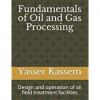tm1274:
My initial comment was based on the fact that this is the Industrial Professionals Forum and it is populated by such professionals as thorium90 and PingPong. I am sure that they, like me, are assuming that you also are a professional engineer. I bring this up – as well as your knowledge regarding compressible fluids – because your query seems to be a very basic and simple problem and if there is any lack of understanding compressible fluids on your part, this could really evolve into a very long and difficult-to-understand thread.
Without a detailed sketch – such as I submit here as an Excel upload – it is difficult to understand exactly what you are describing. I have sketched my interpretation of your description in order to make sure the thread is conveying the correct description. Please correct the sketch and the operational description if it does not comply with what you are proposing.
You describe the storage cylinder(s) as 4,500 psi, 444 cubic feet and 1.5 acf. I presume you mean to state that the maximum storage pressure in the cylinder is 4,500 psiG and that it has a total water capacity of 444 ft3, while containing 1.5 ACTUAL ft3 of air. Please take note that you MUST always state the actual pressure units as either GAUGE or ABSOLUTE. This is always required when dealing with compressible fluids. Also note that the actual volume of air is not identified as to what pressure and temperature it is at. You must identify these “actual” conditions in order to convert this to either mols or mass of air.
You are obviously starting out with the storage cylinders filled with air at their maximum pressure and some temperature, correct? (You must identify that temperature)
You are using the stored air to fill smaller cylinders at a pressure of 2,216 psig and containing 45 ft3, correct? If so, then you must state what are the conditions of the 45 ft3 – is this volume measure at “standard” or actual conditions, and what are those conditions?
Bear in mind that you are proposing what in industry is called a “cascade” type of gas transfer. This transfer method is done by using the initial gas fill from one storage cylinder and “topping” the fill off by using higher-pressure storage cylinders when the pressure in the first storage cylinder falls below 2,216 psig. The procedure is not as simple as you depict it.
Additionally, there will be an initial temperature increase inside the smaller cylinder being filled. This is because of the compression taking place there. There will also be some cooling taking place at the high pressure valve transferring the air. This is due to the Joule-Thomson Effect.
 Cascade Gas Transfer.xlsx 11.62KB
44 downloads
Cascade Gas Transfer.xlsx 11.62KB
44 downloads

 FB
FB












